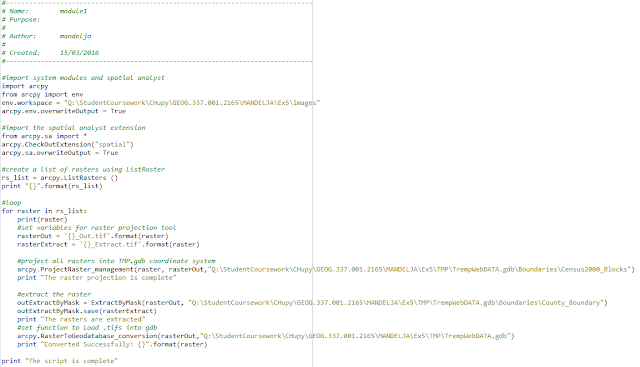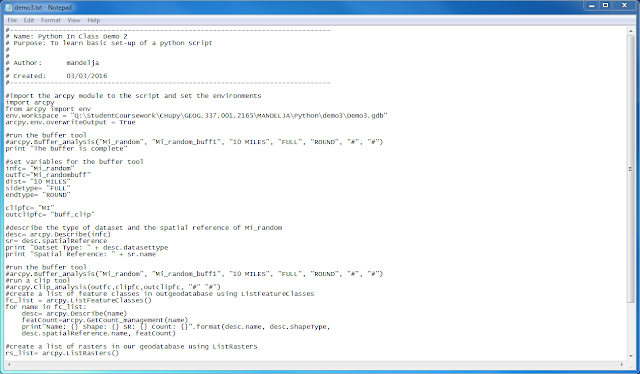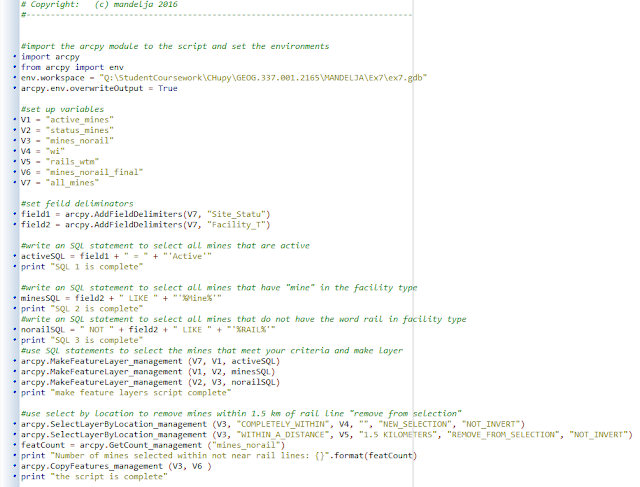Building a Suitability Raster for Mine Placement
Introduction:
The goal of this activity is to create multiple raster outputs for Trempealeau County (figure 1) in regards to frac mine location. The county is in the southwest region of Wisconsin and has the southern tip of the county touching the Mississippi River. Due to the geoprocessing ability of the computers being used and the time required, only the southern half of the county will be analysed though the same processes could be run on the northern portion as well. Models will be created to show where mining is desirable and where mining is more dangerous. A final map should be able to display the best location for mines with the least impact on humans and the environment.
Figure 1: The area of interest is Trempealeau County Wisconsin.
Objectives:
Suitability of mining:
- geologic criteria
- land use/cover criteria
- distance to railroads
- appropriate slope
- water table depth
- Combine 1-5 into a display
Dangerous Mining:
- Impact on streams
- impact on ideal farmland
- impact on residential and populated areas
- impact on schools
- impact on wildlife areas
- Combine 1-5 into a display
Methods:
The process for this lab is to use model builder to create a workflow to take several different feature classes and arrive at the result of a suitability model. To do this the required features to determine quality of mining were added to model builder and reclassified. The reclassify tool allows the map maker to break down the feature class from the original values to simply desirable or undesirable, this allows for simpler input in the raster calculator and makes the suitability level in each layer more visible. The workflow, figure 2, is for the suitability raster for mine placement. Since this did not work and resulted in the crashing of ArcMap continuously the maps created to go into the raster calculator are included in figure 3.
Figure 2: The set up for the model builder for suitability.
Figure 3: These maps combine to show the ideal placement for frac mines.
After suitability was calculated the next step was to figure out where mines could not be located, these were areas that would impact schools, residential areas, wildlife areas, streams, and farmland. The same workflow idea was used with this impact calculator except this time it was to figure out where would not work as opposed to where would work. This model ran smoother and allowed me to run raster calculator. The workflow, figure 4, shows the steps run in model builder though several steps were done outside the model to prepare it for the model. The final output, figure 5, is where the mines could not go, the risk index on the final map display areas to avoid when mining.
Figure 4: This workflow was used in model builder to calculate mining risk.
Figure 5: The final impact maps.
Conclusion:
When all of the tools were done running the result is a collection of maps that shows where a mine should be placed and another collection pointing to where mines should not be placed. Had the first raster calculator worked it would have shown, as it does in figure 5, a final map with a summary of the maps showing where to place a mine.
Discussion:
This was one of the most frustrating projects I have yet done. There were continuous shutdowns and crashes by ArcMap and several of the tools, mainly euclidean distance and raster calculator persisted to not run. In the end the result for the impact on mining was as desired. This lab, even in its non-perfection, required an immense amount of work and trouble shooting.
The sources for the information used in the maps are sited on the maps themselves.


























